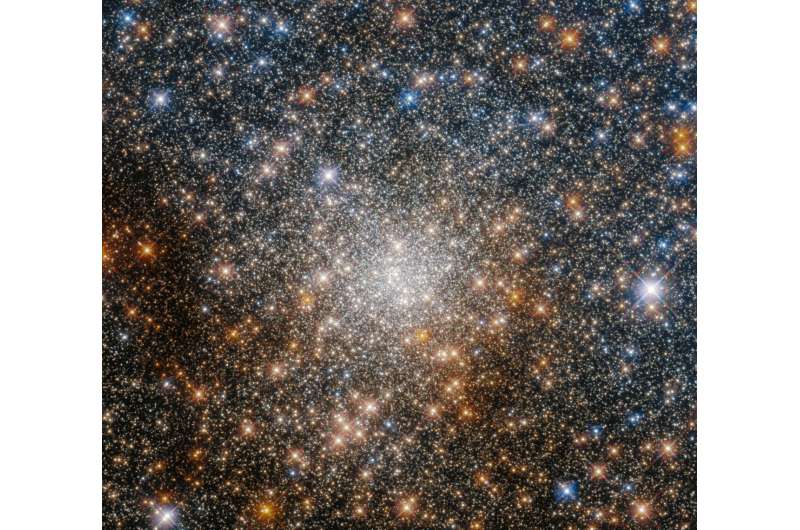Credit: SA/Hubble & NASA, R. Cohen
This star-studded image shows the globular cluster Terzan 9 in the constellation Sagittarius, toward the center of the Milky Way. The NASA/ESA Hubble Space Telescope captured this glittering scene using its Wide Field Camera 3 and Advanced Camera for Surveys.
Globular clusters are stable, tightly bound groups of tens of thousands to millions of stars. As this image demonstrates, the hearts of globular clusters are densely packed with stars. Terzan 9 is dotted with so many glittering stars that it resembles a sea of sequins, or a vast treasure chest crammed with gold.
This starry snapshot is from a Hubble program investigating globular clusters located toward the heart of our home galaxy, the Milky Way. The Milky Way's central region holds a tightly packed group of stars known as the galactic bulge, which is rich in interstellar dust. This dust makes globular clusters near the galaxy's center difficult to study, as it absorbs starlight and can even change the apparent colors of stars in these clusters. Hubble's sensitivity at both visible and infrared wavelengths allows astronomers to measure how star colors change due to interstellar dust. Knowing a star's true color and brightness allows astronomers to estimate its age, and thereby estimate the globular cluster's age.
Provided by NASA's Goddard Space Flight Center
























